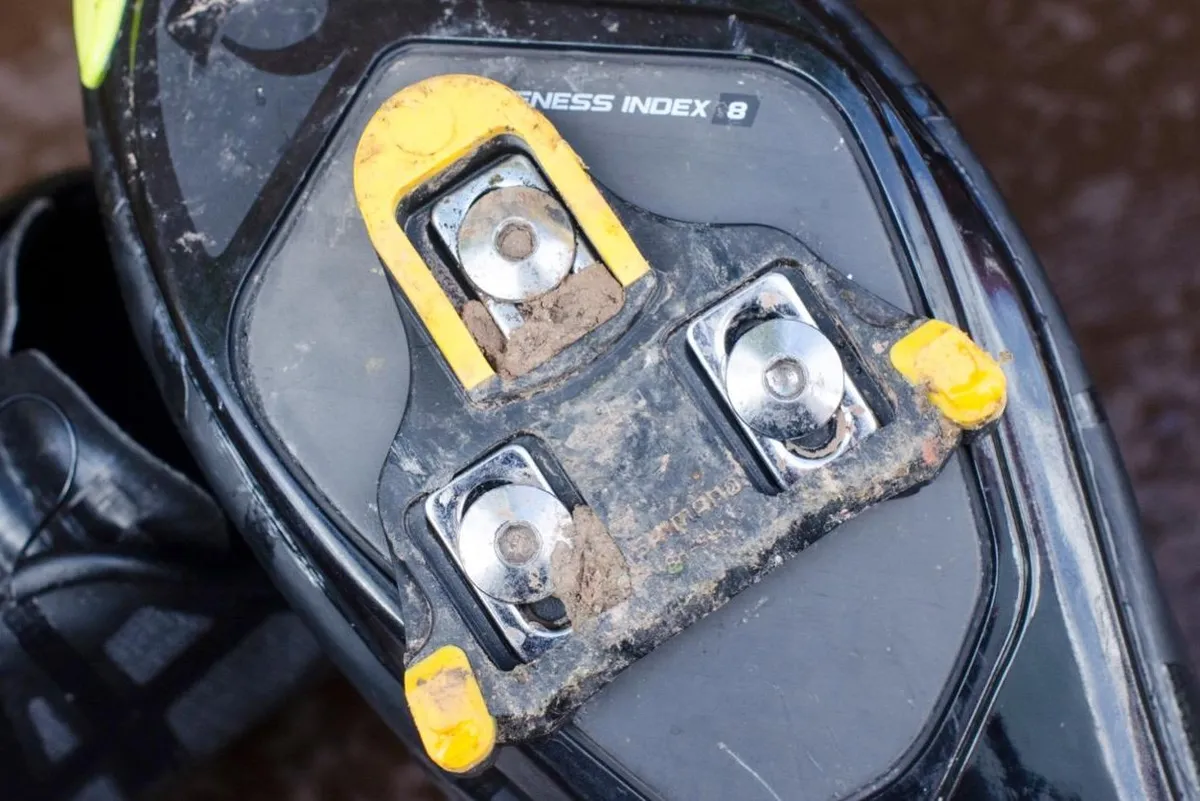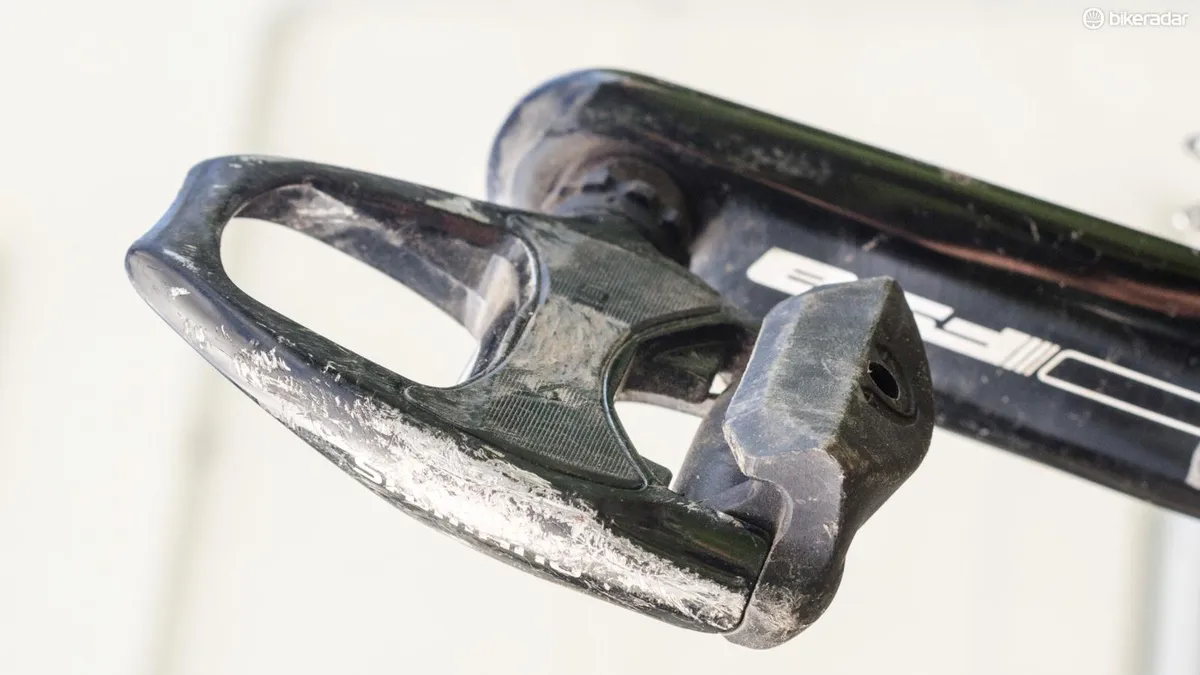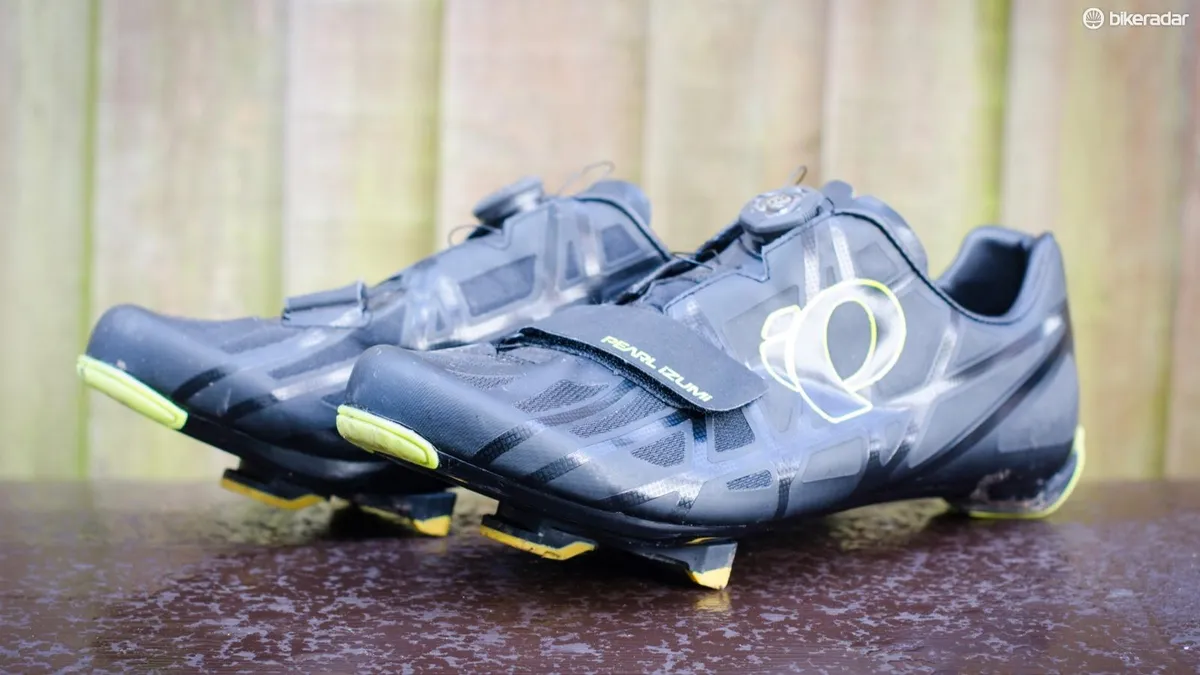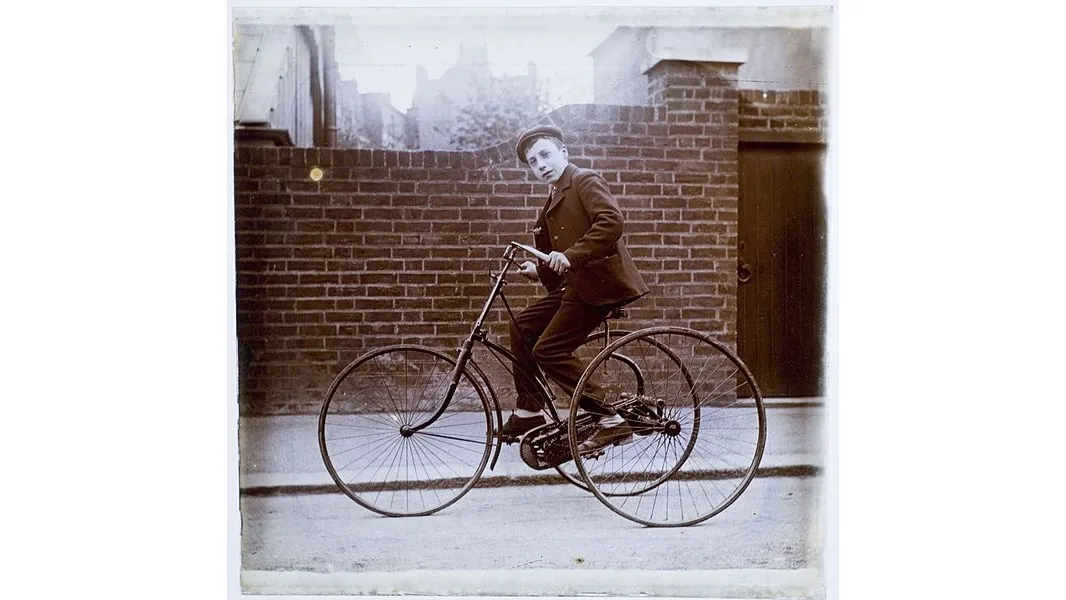Thinking of making the switch to proper road shoes and pedals? Wondering if it’s worth all the hassle and expense just to end up lying on your side like a cyclepath symbol by Banksy? Then treat me as your guinea pig. I don’t mean take me home during the school holidays and let me die so your dad has to buy a replacement; I mean experiment on me. Actually, not that either. This is getting weird.
Moving on, let’s discover what it’s really like to be clacking around like a proper roadie, ‘clipping in’ to your pedals despite them being literally clipless, and not finding that idea weird either.
Beyond the basic advice on setting them up, what hidden truths exist that THEY don’t want you to find? This is the internet, so obviously there’s a conspiracy.
- Your top tube length is irrelevant
- How to install and adjust cycling cleats
- SPD vs SPD-SL pedals: what's the right system for you?
1. Don’t expect adjustment to be easy
Tiny movements of the cleat — a single millimetre or degree — have enormous effects, because somehow they’re cumulative.
Get one foot a fraction behind the axle and as the miles rack up you go from feeling completely even to like you’re standing on a surfboard.
With this in mind, I was delighted to find the handy alignment marks on my shoes were almost completely obscured by the cleats. It takes a certain dedication to the underlying absurdity of the universe to go to the trouble of including lines, but then making them too short to be useful.

Perhaps 50 percent of the handlebars I’ve used over the years have taken a similar approach, where the marks are totally covered by the stem they’re designed to fit. It’s the sort of surrealist statement on the futility of endeavour that I can really get behind. Although obviously I’m behind it at a funny angle.
It’s really hard to adjust your cleats in one direction without accidentally adjusting another. Leaving the bolts pinched instead of totally loosening them helps, as does leaving one pinched harder if you only want to adjust the angle.
It’s best if you can only just move the cleat. Make TINY adjustments. Keep the relevant hex key handy to save faffing with a tucked-away multi-tool on your first couple of rides, and expect to stop often.
Try hard not to fall over sideways when you do.
2. Pay attention to the angle of your feet — and don’t assume you can ‘correct’ it
It’s actually quite hard to judge the angle that your feet naturally rest at. I should have paid more attention to how they look on flats.
An old injury means my left ankle doesn’t bend very well, and the whole foot tends to angle out more than the right. It’s a little annoying.
I tried to ‘fix’ this by straightening the cleats and giving myself less ‘toe out’ for what I thought would be a better angle (one I adopt on flat pedals whenever I think of it). The result? Rapid onset of knee pain. As in, within 10 miles. It turns out both my heels need to be tucked in very close to the cranks.

I’ve reached the limit of adjustment and still have some low-level knee issues. I’ll be trying arch-supporting inserts next. If you have flat feet like me, you’ll notice your heels roll in, twisting your knees as they go. Glued down level to the pedal axles via cleats, the only way to adjust this is within the shoes themselves. Here’s hoping there’s room…
The best way I found of seeing how your feet really want to align is to jump on the spot a couple of times. Stay relaxed and they end up pointing where they want to point. Follow this alignment (even if it’s not symmetrical) rather than trying an idealised, parallel-with-the-bike one. It’ll hurt if you don’t.
3. Don’t forget to adjust your saddle as well
And maybe everything else on the entire bike. It’s extremely unlikely your feet will be the same distance above the pedal axles as they were with your old pedals/shoes, which means the effective distance between the pedals and seat has changed.
It took me a little while to realise my saddle was now too low. Raising it around 4mm was a huge help, taking more pressure off my knees and allowing a more natural ankle motion. Of course, raising the saddle also moves it back slightly, and tips more weight onto your hands. You may need to adjust for that, too.
Oh, and if you’re a long-time flat pedal user like me, note that the heel check (put your heel on the pedal and an almost-but-not-quite-straight leg means the saddle is the right height) doesn’t work.
It should have occurred to me sooner, but the heels of clipless shoes actually sit higher than the fronts, because not all of the cleat disappears into the pedal. You may have realised this already if you’re not a blithering idiot like me, and thus not misjudged your saddle height, but if you are a blithering idiot like me then you’re welcome.
4. Do expect to forget all about pedalling smoothly
So riding a road bike on bright blue flat pedals and in Shimano AM41 shoes is a terrible sacrilege, one for which I will pay dearly in Cycling Hell, where crosswinds atomise the coffee and the only cake is a really dry Victoria sponge. I know. But doctrine aside, flat pedals’ less-than-perfect suitability forced me to really think about my technique.
It was vital to concentrate on powering all the way down through the stroke, and about spinning smooth circles (instead of mashing), in order to maximise what efficiency I could. I actually learnt quite a lot. Because I was forced to.

Just a few rides in with clipless and I realised all of that had gone out of the window. I was spending the climbs thinking about other things — partly about pulling up on the cleats, which certainly helps, but mostly just about ploughing my way up the hill and nothing about smoothness. Bad habits, it seems, come easily with clipless.
You know that annoying orthodoxy where new mountain bikers are supposed to serve some sort of hair-shirted training period on hardtails before moving up to full-suspension, as if that were the only way to develop ‘real’ skills? Why don’t we have a similar annoying orthodoxy where everyone has to pay their dues on flats in order to really learn how to pedal?
Now I think of it, we could have one about having to ride a rigid bike for years before you’re allowed on a hardtail, too. Wouldn’t that be great?
Better still, if we embrace my doctrine of Flat Pedals First, then all those smugly straight-to-clipless riders will end up in Cycling Hell. With me. HA! Enjoy the disappointing vanilla sponge, losers! FOR EVER!

By whatsthatpicture [CC BY 2.0], via Wikimedia Commons
5. Don’t expect instant extra speed. Though it will come
Not many people know this but I’m a grown up, so I didn’t really believe that swapping to clipless pedals would instantly make me gigantically faster absolutely everywhere. Except tucked away in a tiny corner of my heart, like a fragile little hope that just turns out to be a Playmobil traffic cone lodged in a lung, lived a miniature version of exactly that dream.
Naturally it was dashed on reality’s rocks, like all hopes and dreams in the ocean of tears we call life. I know, I’m inspiring. I’m like a sunset on Instagram, only without the sentimental words and barbed wire instead. #Futility #Death #SquadGoals
After a few rides though, extra performance is starting to appear. There’s a benefit to the weight drop (273g over my old setup), but oddly that’s most noticeable in it being easier and way smoother to spin, rather than snappier to accelerate.
There’s also a surprisingly large benefit to never having to reposition my feet during standing climbing. Unloading one foot (my misbehaving left) enough to reposition it without pausing pedalling wastes a fair amount of energy, it seems. Having my feet always perfectly positioned is a luxury.
In conclusion then, it turns out that everyone since 1985’s Tour de France-winner Bernard Hinault has been right. These fiddly, awkward clipless pedals are actually pretty good. So, uh… well done everybody. I’m still not using them for mountain biking, though. No. If you think that you can just do one.
See you in Cycling Hell.
